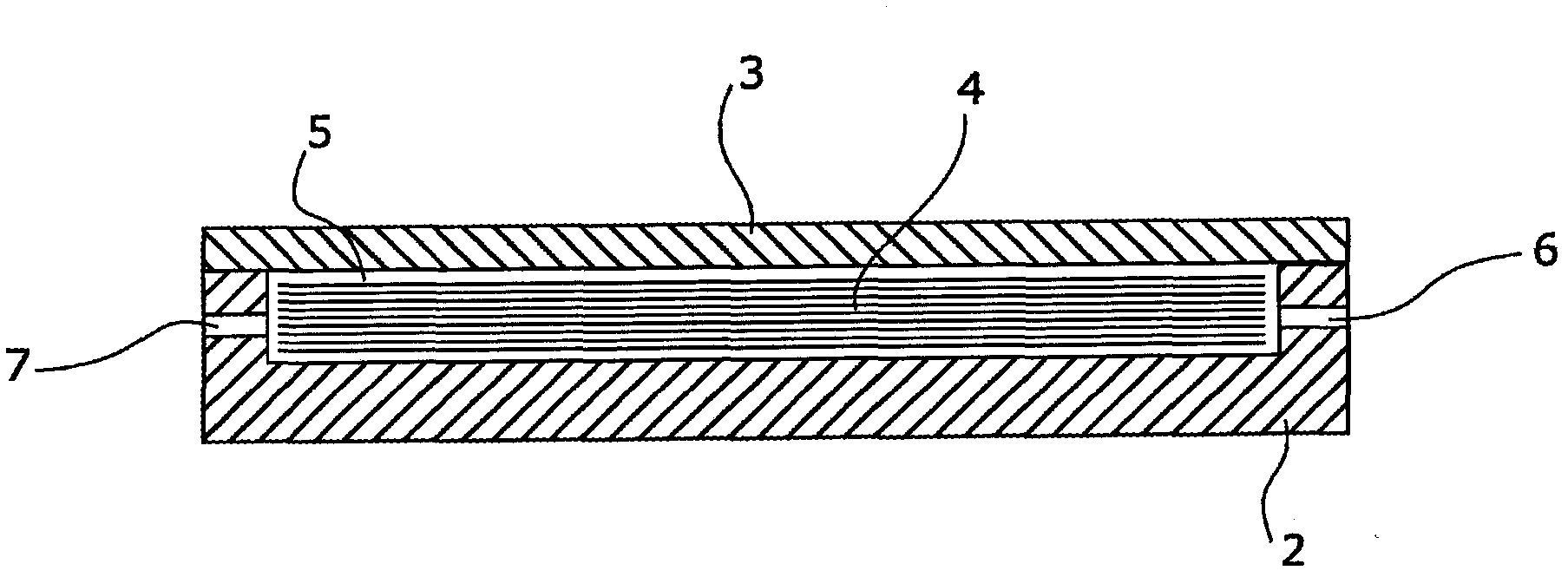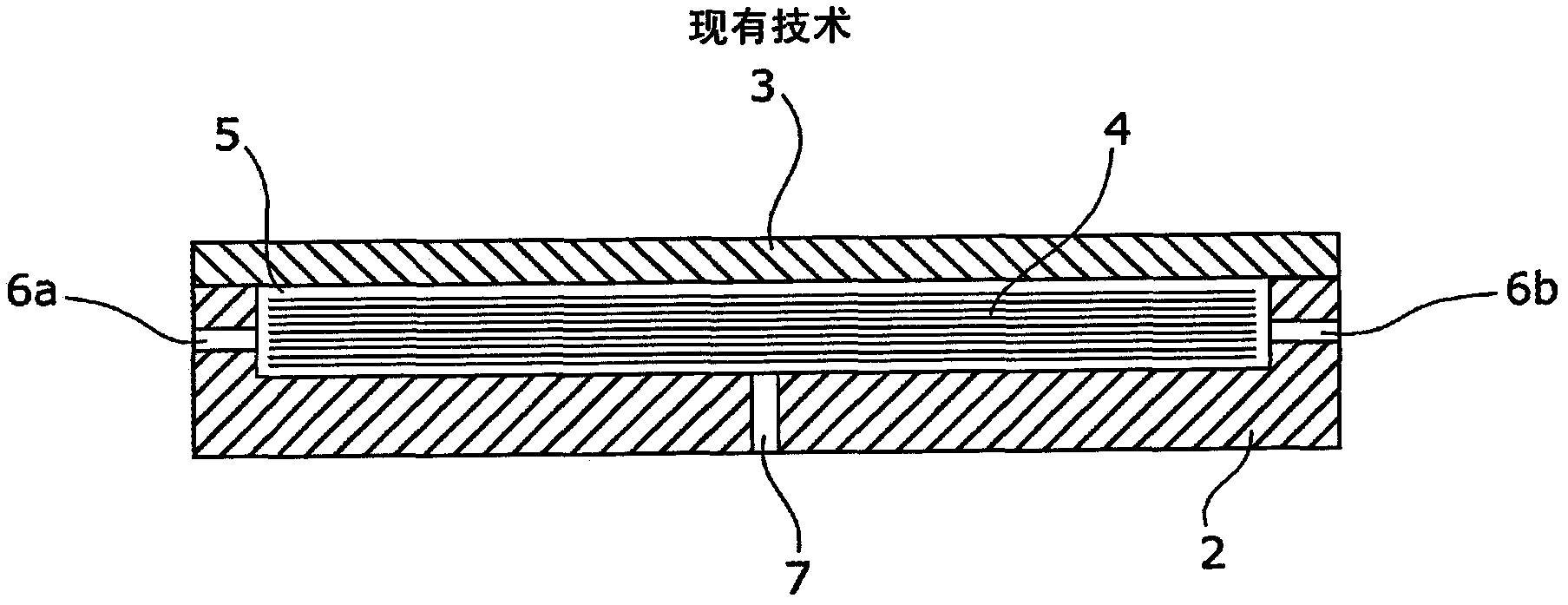Method of manufacturing polymer composite member by use of two or more resins
A composite material and polymer technology, applied in the field of resin infusion technology, can solve problems such as high material cost
- Summary
- Abstract
- Description
- Claims
- Application Information
AI Technical Summary
Problems solved by technology
Method used
Image
Examples
Embodiment Construction
[0031] figure 1 A known mould arrangement 1 is shown schematically for the manufacture of fibre composite elements by using resin transfer moulding techniques. The mould arrangement 1 comprises a first mould part 2 and a second mould part 3 which are usually treated with a release agent and possibly also a coating before use. In this figure and the following figures, the first mould part 2 and the second mould part 3 are shown as rigid elements, but the second mould part 3 may also be flexible, such as by being fastened to the first mould part 3 by using a sealing tape Plastic sheet on mould part 2. A fibre layer 4, usually in the form of a mat, and possibly a release cloth (not shown) is placed on the first mould part 2, and the second mould part 3 is placed on top of it. Resin is introduced into the mould cavity 5 and into the fibers 4 via the resin inlet 6, also referred to as a resin infusion port. The preparation of the resin is not included in the figures, but is well...
PUM
 Login to View More
Login to View More Abstract
Description
Claims
Application Information
 Login to View More
Login to View More - R&D
- Intellectual Property
- Life Sciences
- Materials
- Tech Scout
- Unparalleled Data Quality
- Higher Quality Content
- 60% Fewer Hallucinations
Browse by: Latest US Patents, China's latest patents, Technical Efficacy Thesaurus, Application Domain, Technology Topic, Popular Technical Reports.
© 2025 PatSnap. All rights reserved.Legal|Privacy policy|Modern Slavery Act Transparency Statement|Sitemap|About US| Contact US: help@patsnap.com



